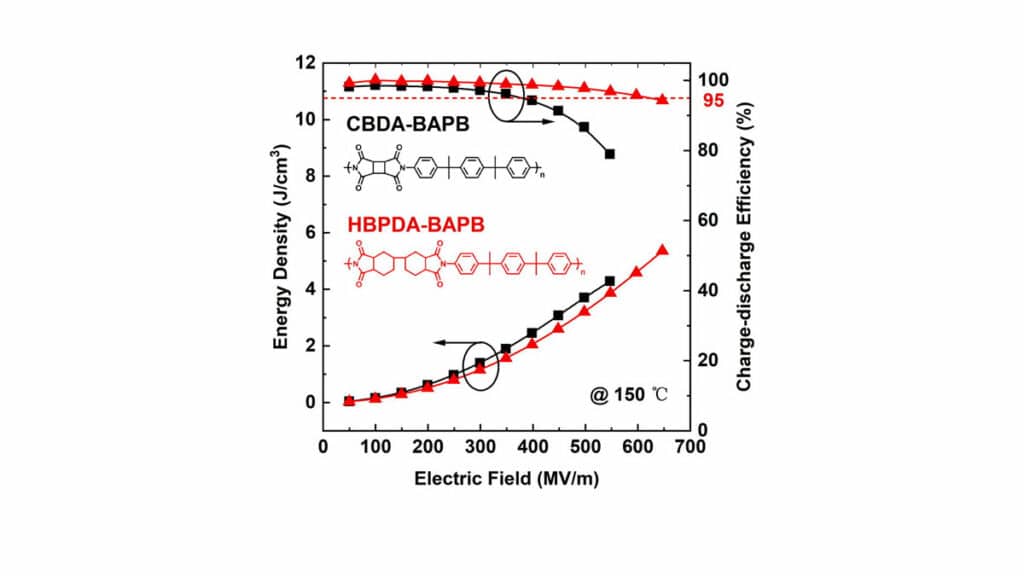Researchers from Hefei National Research Center and Nanjing University, China achieved superior dielectric energy storage performance for high-temperature film capacitors through molecular structure design.
Film capacitors based on polymer dielectrics face substantial challenges in meeting the requirements of developing harsh environment (≥150 °C) applications.
Polyimides have garnered attention as promising dielectric materials for high-temperature film capacitors due to their exceptional heat resistance. However, conventional polyimides with narrow bandgaps suffer from significant conduction loss at high temperatures and high electric fields. Here, we design and synthesize a series of modified polyimides featuring different saturated alicyclic structures on their main chains.
Among these, the HBPDA-BAPB polyimide exhibits a superior discharged energy density of 4.9 J/cm3 with a high efficiency exceeding 95 % at 150 °C, outperforming other reported dielectric polymers and composites.
The mechanism is attributed to the incorporation of elongated noncoplanar dicyclohexyl units into the backbones, which significantly reduces molecular conjugation, enhances the bandgap and suppresses leakage current.
Our findings demonstrate the potential of modified polyimides with alicyclic structures as high-temperature dielectric materials for practical applications.
In Summary
The researchers designed and synthesized polyimides with different alicyclic units inserted between imide groups and investigated their dielectric energy storage performance.
The monomers of CBDA, HPMDA, and HBPDA with different spatial structures of cyclobutyl, cyclohexyl and dicyclohexyl linkers were selected to construct new types of polyimides. Among reported dielectric polymers, the polyimide of HBPDA-BAPB with dicyclohexyl units on the backbone delivers the highest discharged energy.
Reference:
Superior dielectric energy storage performance for high-temperature film capacitors through molecular structure design; https://doi.org/10.1016/j.cej.2024.152623
